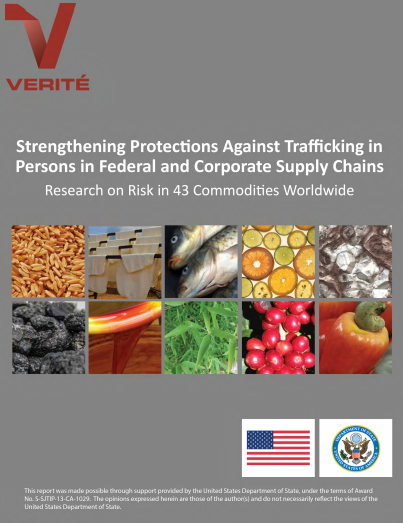Introduction and Project Background
More than twenty million men, women and children around the world are currently believed to be victims of human trafficking, a global criminal industry estimated to be worth $150.2 billion annually. As defined in the US Department of State’s 2014 Trafficking in Persons Report (TIP Report), the terms “trafficking in persons” and “human trafficking” refer broadly to “the act of recruiting, harboring, transporting, providing, or obtaining a person for compelled labour or commercial sex acts through the use of force, fraud, or coercion,” irrespective of whether the person has been moved from one location to another. Trafficking in persons includes practices such as coerced sex work by adults or children, forced labour, bonded labour or debt bondage, involuntary domestic servitude, forced child labour, and the recruitment and use of child soldiers. Many different factors indicate that an individual may be in a situation of trafficking. Among the most clear-cut indicators are the experience of coercive or deceptive recruitment, restricted freedom of movement, retention of identity documents by employers, withholding of wages, debt bondage, abusive working and living conditions, forced overtime, isolation, and physical or sexual violence.
The United States Government is broadly committed to combating trafficking in persons, as guided by the Trafficking Victims Protection Act (TVPA) of 2000, and the UN Palermo Protocol to Prevent, Suppress and Punish Trafficking in Persons, Especially Women and Children, Supplementing the United Nations Convention Against Transnational Organized Crime. In September 2012, the United States took an unprecedented step in the fight against human trafficking with the release of a presidential executive order (EO) entitled “Strengthening Protections Against Trafficking in Persons in Federal Contracts.” In issuing this EO, the White House acknowledged that “as the largest single purchaser of goods and services in the world, the US Government has a responsibility to combat human trafficking at home and abroad, and to ensure American tax dollars do not contribute to this affront to human dignity.”
The EO prohibits human trafficking activities not just by federal prime contractors, but also by their employees, subcontractors, and subcontractor employees. Subsequent amendments to the Federal Acquisition Regulation (FAR) and the Defense Acquisition Regulations System (DFARS) in the wake of the EO will affect a broad range of federal contracts, and will require scrutiny by prime contractors of subcontractor labour practices to a degree that has not previously been commonplace. Top level contractors will now need to look actively at the labour practices of their subcontractors and suppliers, and to consider the labour involved in production of inputs even at the lowest tiers of their supply chains.
The EO additionally requires prime contractors providing large overseas contracts to develop and maintain detailed anti-trafficking compliance programs and provide annual certification of their anti-trafficking efforts.
This report is not intended to provide specific guidance on EO compliance, but it does provide the framework and resources necessary to understand the risk of human trafficking in global supply chains, and can help readers begin to assess the risk of human trafficking in particular federal supply chains. There is no way for any consumer or employer to anticipate all instances of human trafficking, but supply chain risk analysis can narrow down where to look to identify and mitigate the risks associated with the problem as much as possible.
First, an overview of the main factors that contribute to the risk of human trafficking in global supply chains is provided. Later sections examine eleven economic sectors found to be at particularly high risk for trafficking. Sections to be released in the future will analyze the supply chains and risks of trafficking for forty-eight of the world’s most important commodities. Data on variables relevant to trafficking risk in specific countries (information on market activity, migration patterns, human rights indicators, socio-political factors, etc.) has also been collected in spreadsheet form, and will be developed further in the coming months in the course of creating the web-based risk assessment tool. For more information on this ongoing country-specific supply chain research, please contact Verité.

